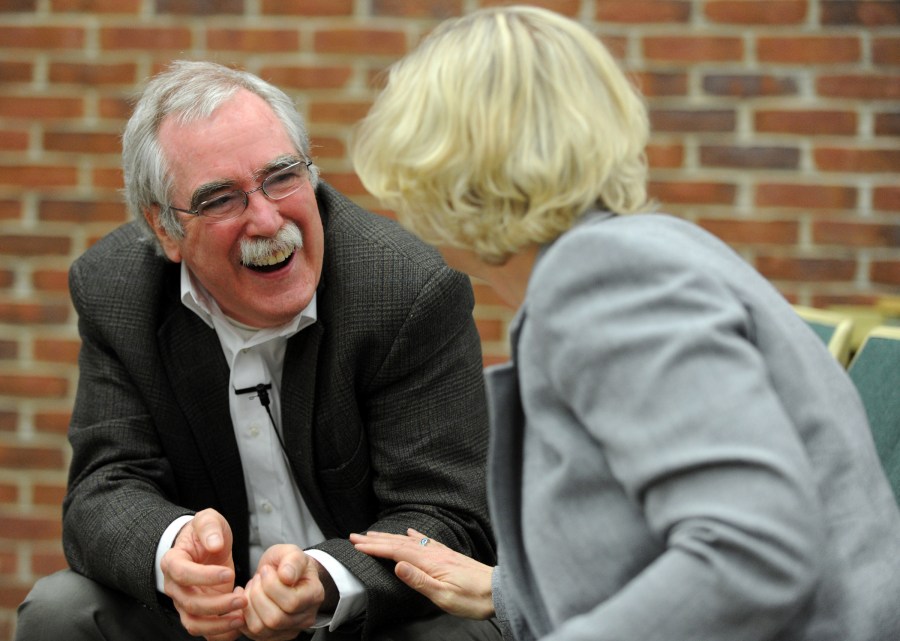
Nobel laureate Eric Wieschaus, Ph.D., shares a laugh with Susan Wente, Ph.D., at last week’s Discovery Lecture. (photo by Joe Howell)
Lecturer explores cell shape changes in development
Eric Wieschaus, Ph.D., who won the Nobel Prize for discoveries related to the genetic control of early embryonic development, didn’t want to talk about specific gene products during last week’s Discovery Lecture. His focus now, he said, is on cell shape changes and the mechanisms that contribute to the increasingly complicated morphology of the developing embryo.
His team is trying to develop a “more global understanding of how putting force some place in a cell translates into a global change in that cell’s morphology,” said Wieschaus, Squibb Professor of Molecular Biology at Princeton University and Howard Hughes Medical Institute investigator.
Using the fruit fly embryo as a model system, Wieschaus described a series of experiments studying the shape changes of a group of cells that move from the surface of the embryo into the interior, where they eventually become muscle and internal structures.
“These cells move to the interior by a defined set of cell shape changes that ultimately allow the cells to assume their significance,” he said.
Wieschaus and colleagues have identified a novel, pulsing organization of the motor protein myosin that exerts contractile force at the surface of these cells. They have also developed computational software, called Embyro Development Geometry Explorer (EDGE), to track and mathematically model the physical properties of the cells.
Their analysis suggests that force generated at the surface of the cells is transmitted over large cellular distances by restrictions on cellular volume – think of the cell as a water-filled balloon being squeezed on one end, Wieschaus said.
Surprisingly though, the investigators have discovered that many of the shape changes still occur in mutant fly embryos that lack cellular membranes. They are now using fluorescent beads to study the properties of the cytoplasm (cellular “filling”) that transmit force in the absence of membrane.
Wieschaus had a message for students in the audience who are interested in visual cell biological studies: “Not only do you need to be able to develop microscopic strategies that allow you to collect data, but one of the real demands … is for computational skills that allow you to analyze and use these large datasets,” he said.
Wieschaus’s lecture was also the Abraham Flexner Lecture in Biomedical Science and the Cell and Developmental Biology Distinguished Faculty Lecture.
For a complete schedule of the Discovery Lecture series and archived video of previous lectures, go to www.mc.vanderbilt.edu/discoveryseries.













